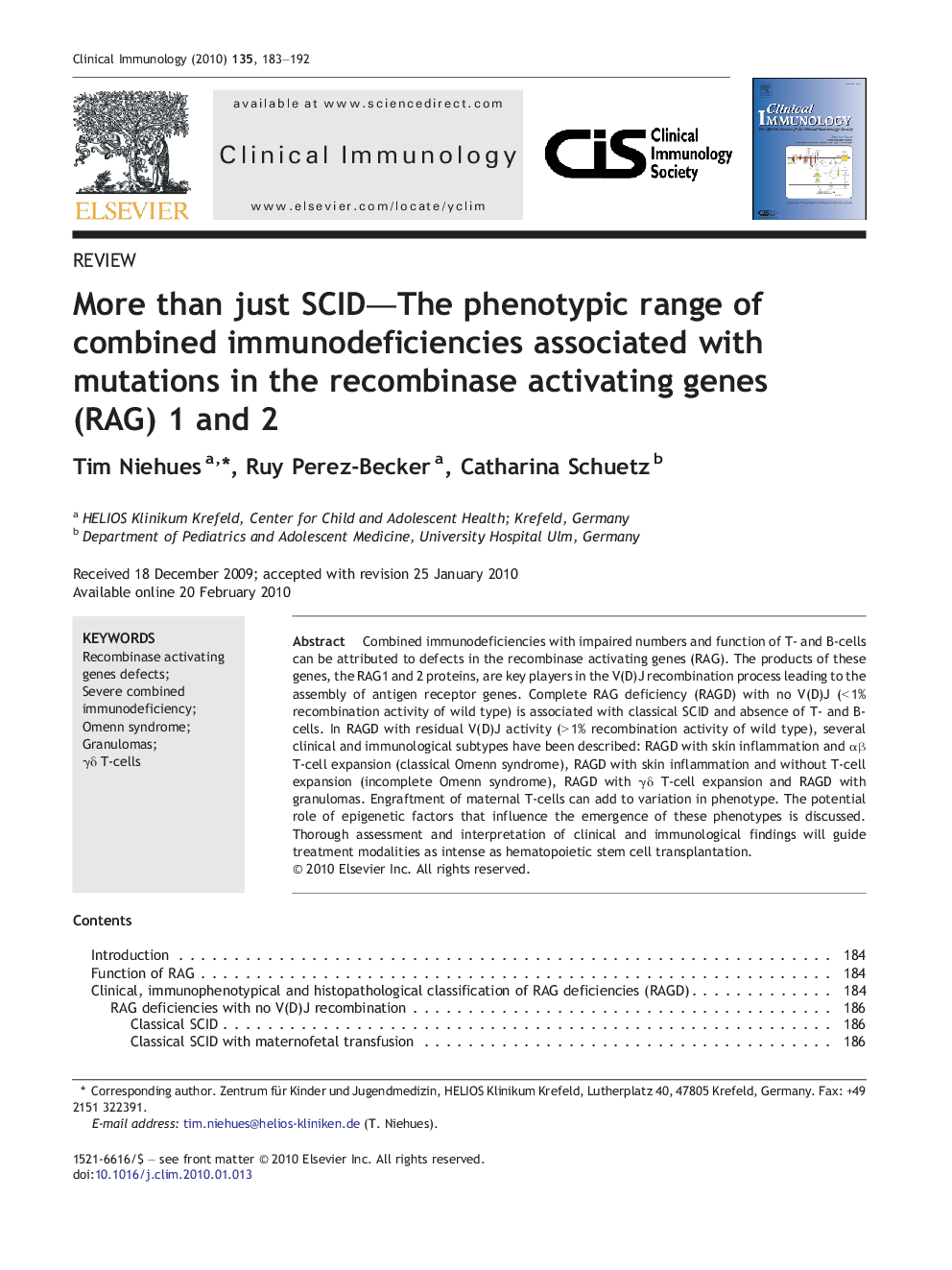| Article ID | Journal | Published Year | Pages | File Type |
|---|---|---|---|---|
| 3257756 | Clinical Immunology | 2010 | 10 Pages |
Combined immunodeficiencies with impaired numbers and function of T- and B-cells can be attributed to defects in the recombinase activating genes (RAG). The products of these genes, the RAG1 and 2 proteins, are key players in the V(D)J recombination process leading to the assembly of antigen receptor genes. Complete RAG deficiency (RAGD) with no V(D)J (< 1% recombination activity of wild type) is associated with classical SCID and absence of T- and B-cells. In RAGD with residual V(D)J activity (> 1% recombination activity of wild type), several clinical and immunological subtypes have been described: RAGD with skin inflammation and αβ T-cell expansion (classical Omenn syndrome), RAGD with skin inflammation and without T-cell expansion (incomplete Omenn syndrome), RAGD with γδ T-cell expansion and RAGD with granulomas. Engraftment of maternal T-cells can add to variation in phenotype. The potential role of epigenetic factors that influence the emergence of these phenotypes is discussed. Thorough assessment and interpretation of clinical and immunological findings will guide treatment modalities as intense as hematopoietic stem cell transplantation.
